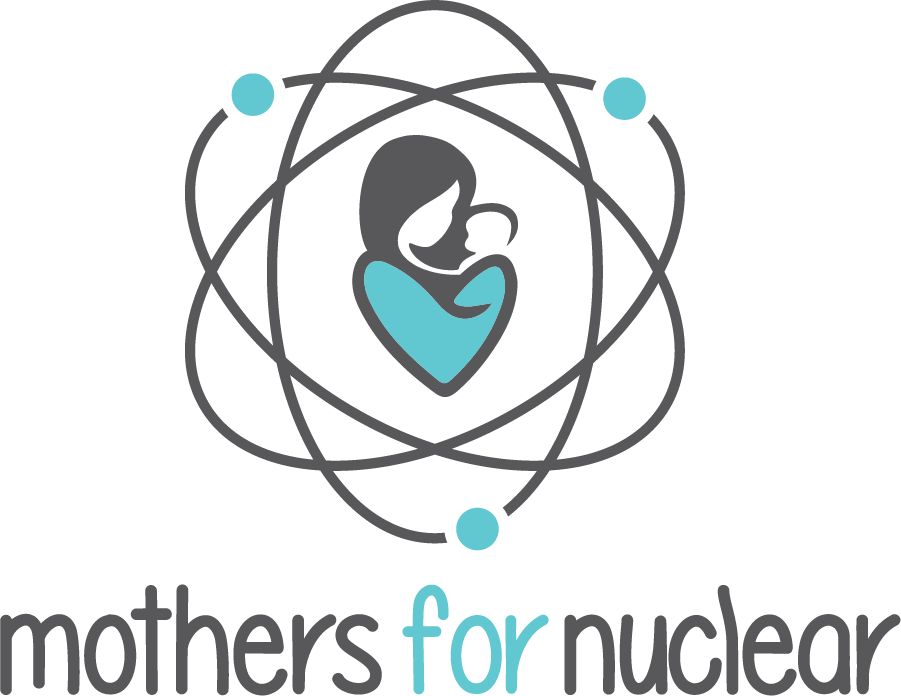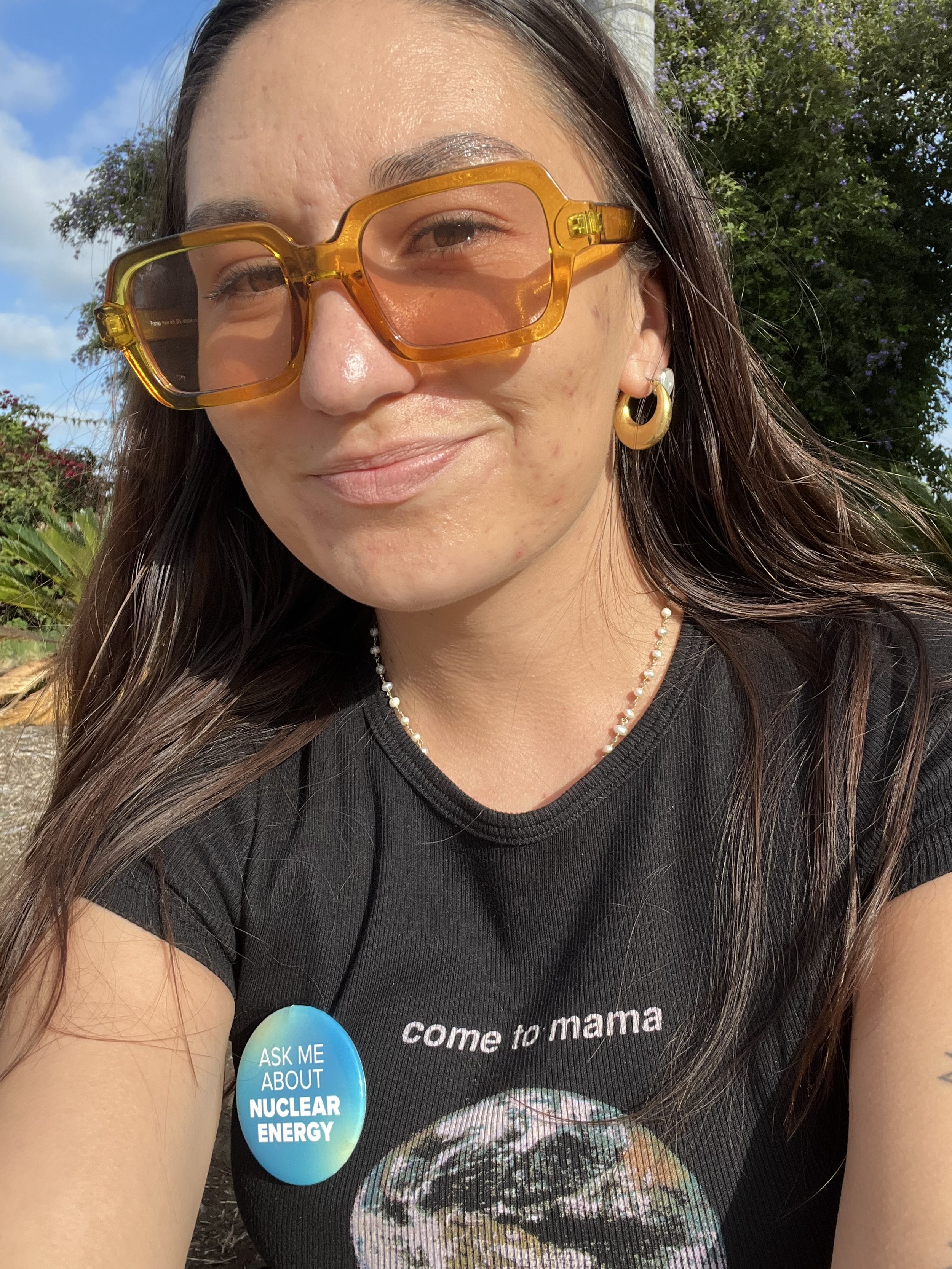2023 National Nuclear Science Week
On October 12, Paris went to Nuclear Science Week in San Diego! The first Nuclear Science Week (NSW) celebrations were held in 2010. The program has grown over the years and is now a gigantic exhibition of art, education, community-building and celebration that is held in different cities across the nation every year.
In the past, MfN had only done some minor social media surrounding NSW. But we *LOVE* nuclear art (along with most things nuclear) and when we learned of last year’s event at the Illinois Institute of Technology with a cool “nuclear art” exhibit, we decided it was definitely time for us to start participating and get to know the amazing group of people that help organize these events (including the National Museum of Nuclear Science and History, which Heather visited in June 2023).
Here’s a little bit about Paris’s experience!
On the morning of October 12th, I started my walk to the Fleet Science Center Museum, where the event would take place, located inside Balboa Park. Inside were dozens of exhibits of art, science, and culture, and for Nuclear Science Week, museum visitors got the added benefit of learning about nuclear NGOs, companies, and clubs who were staged among the regular exhibits.
After I checked in with our hosts, I headed to join our friends, Generation Atomic, at their booth. For the next 5 hours, I had the opportunity to engage with children ages 5 - 17 and their parents. I must admit it was my first time engaging with such young children. What do you say to a child about nuclear when they know nothing about it and very little about energy/electricity? I decided to stick with, “Nuclear energy is clean energy. We need it to fight climate change.” As nuclear advocates, we are constantly adjusting our messaging to best reach our audiences, and communicating with kids and families is an important angle that hopefully all advocates get to experience and practice.
But of course, it was with games and props that allowed for easy-flowing conversations and interactions. Kids and their parents LOVED playing the Megawatt game. Many of the attendees were from out of state and about half of them knew about nuclear energy. It was fun asking them and their parents if they knew that their state had a nuclear plant (we had visitors from Arizona, Illinois, and Washington).
Using the cards from the megawatt game we created three state grids and asked individuals to identify which grid corresponded to which state. As you see in the photo, we displayed California, Wyoming, and Illinois. As players guessed, we got to ask them questions and figure out their preconceived notions of the states.
Some interesting interactions I had with folks included:
A young woman who turned out to be a teacher approached us with many questions and left wanting to have nuclear energy curriculum in their class.
A man in full biker gear approached, and it turned out that he was one of the Ukrainian children who experienced the Chernobyl accident. He details his experience of how he and all young children in his town had to be sent away. But when asked about his thoughts on nuclear energy, he described how his parents were pragmatic and rational, allowing them not to fear nuclear energy but to understand what mistakes were made and how to quantify the risks. Although he still had questions and concerns about the cancer rates and the claimed birth defects, he wasn’t anti-nuclear! In fact, he stated that we can’t have a reliable energy system or fight climate change without nuclear energy. It was truly fascinating to hear his story and perspective. I have spoken with another Ukrainian who was also a child during the accident during my time at the SXSW festival and she too felt indifferent and neutral about nuclear, stating that yes happened but it didn’t make her anti-nuclear.
Not everyone is on board with nuclear energy. An older couple came by and I asked them if they had any questions about nuclear, and they simply shook their heads, glared, and said no. I followed up with, “Do you have any thoughts to share?” and they responded with no. It’s sometimes hard to engage with those who feel strongly against nuclear, especially when they don’t want to explain their stance or discuss it.
It’s interesting how the different generations process the question of nuclear energy differently. Some may be scared, and they will never overcome those feelings unless they can get curious. Perhaps the younger generation can help them get curious by demonstrating their own curiosity.
Overall, most people were receptive and pleasantly surprised that pro-nuclear advocacy groups existed and were actively promoting nuclear energy.
Midway through the day, I decided to walk around the museum and say hi to our fellow exhibitors. As I made my way down the hallway, I was delighted to see that the museum highlighted all energy sources, including nuclear energy! But of course, listed underneath the cons was that it produced radioactive waste. MfN and many other pro-nuclear advocacy groups recognize that nuclear waste is small and contained and has never hurt anyone, AND it’s only waste if we waste it. We have high hopes for recycling and low-impact disposal solutions that are on the horizon. Nonetheless, it was highlighted as a low-carbon energy source!
Making my way to our fellow exhibitors, I visited physics students from UC Irvine, Southern Nuclear, ANS San Diego Chapter, Idaho National Lab, Curtis Wright, Southern California Edison, and Spent Fuel Solutions.
ANS San Diego Chapter
Curis Wright Booth
As a local Californian, I was especially excited to talk to our friends at Southern California Edison about the Decommissioning of our beloved San Onofre Nuclear Plant that was prematurely shuttered in 2012. Both men had worked at the plant and were devastated when the decision was made to shut down. They understood that the business case for repairs made it a tough decision for the owners, but they knew that the plant had many more decades to give.
As the event wrapped up, I bid my friends at Generation Atomic bye and headed back to my hotel. As I reflect on the experience, I feel immense gratitude that I can do this for a living. I heard fellow exhibitors talk about nuclear energy and I realized how much of a knowledge gap there still is between companies and the energy situation in the state and with the public. The need for advocates who are doing this day to day is so highly needed. We can serve as the bridge.









